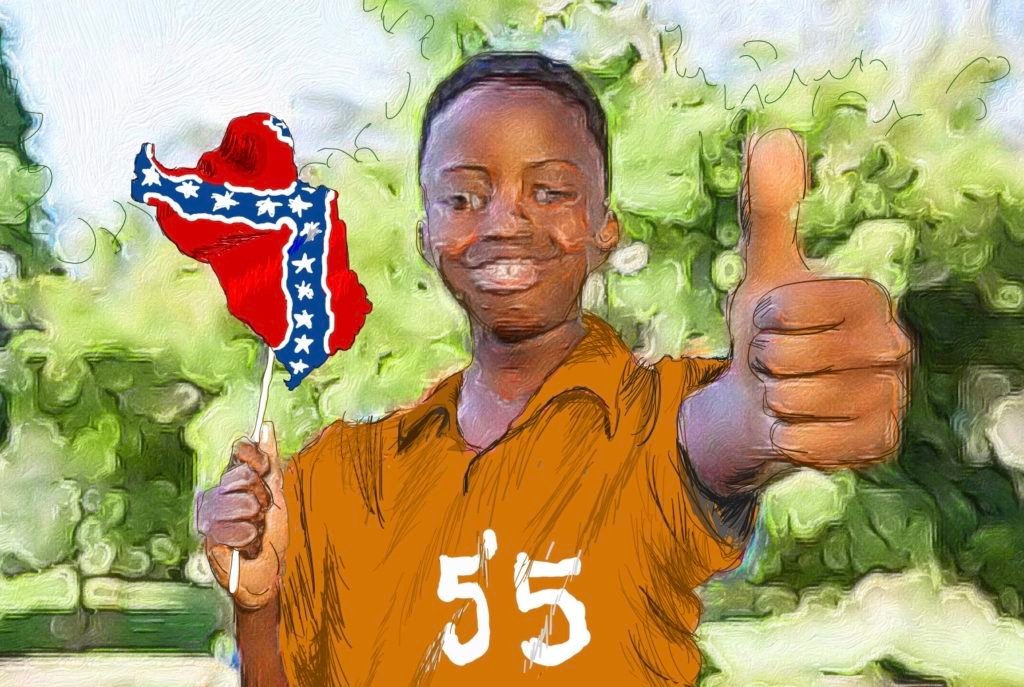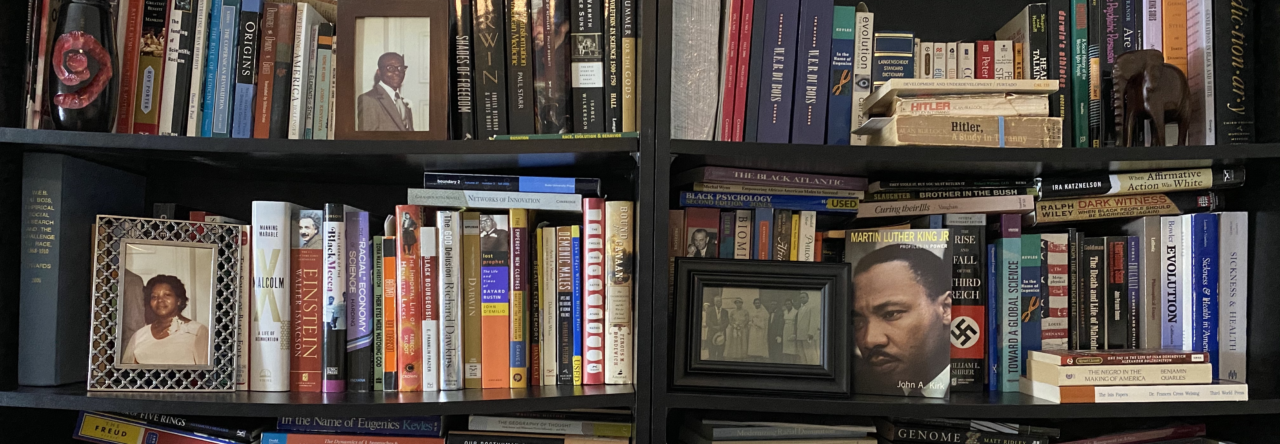
First History Lesson
I didn’t know the difference between the Stars and Stripes—and the cross and stars.
I was 7 or 8 years old when I had my first real history lesson. The lesson I never forgot. The lesson I have been too embarrassed to talk about—until now.
The lesson that made me woke.
It was late Spring 1978 or 1979.
My mother took me downtown to the Smithsonian area where we visited the Air and Space Museum. A decade earlier, she herself had landed at Washington National Airport. Traveling alone, a 34-year-old Jamaican mother of six would meet a white woman, the wife of a prominent white politician who had sponsored my mother’s immigration to the States. My mother arrived as the live-in domestic help. At the airport, she would meet her sponsor, who embraced her and said to her that, “I kept asking every negro woman at the gate: ‘Are you Lauretta?'” My mother was in America. Her new residence would be suburban Maryland where she, in her own description, “cooked food for dem and washed dem dutty baggy.” Arriving in late spring, weeks after the MLK uprisings, she wasn’t really prepared for the pending winter, for being called (and treated like) a “nigger” for the first time in her life.
America, in 1968, was her new home. And she was in bliss.
By the mid-1970s, she became a U.S. citizen. In her 40s, she felt way too proud to be cooking for white people and washing their dirty drawers. She boastfully talked about her coming to America: starting off as a domestic and eventually working her way into the DC government. By the bicentennial, she and my father owned a modest semi-detached row home in Northwest DC. It was an eight-person household, with two cars. Lauretta had arrived. She believed she had achieved her American Dream.
After touring the Air and Space Museum, my mother and I made our way to the outside souvenir stands where I asked her to “buy me something.” It was sunny, and I was wearing a reddish tee shirt with a washed-out black “55” printed on its front. My mother was a collector of anything American. I recall her collecting spoons at the time; she wanted one from all 50 states. She bought one. Now, I wanted a keepsake for myself. I was drawn to a flag. She bought me one. Pirouetting from the stands, I marched with my souvenir, proudly, hoisting it—red, white and blue. I was marking time, waving this miniature, left and right. The flag, a stiff, cheap piece of cloth stapled to a stick, was a blood-red canvas, with a big navy blue cross, bedazzled with bold white stars.
I was waving a miniature of the Confederate flag.
My mother and I made our way through downtown DC, with my waving this flag. We took the bus and headed home. Getting off on New Hampshire Avenue, we had to walk just a block or so to reach Randolph Street, where we lived. She had her spoon. I had my flag, swaying it left and right.
Our next-door neighbor, Mr. Williams, a tall, lanky African-American Army vet, probably in his mid to late 60s at the time, who served in the Second World War or the Korean War, spotted me from a few feet away. Before I stepped foot on our property, the walkway leading up to our porch, he called for me. He stood on his porch, waving his right hand, beckoning me to make my way over to the center-porch area, the demilitarized zone between his house and ours.
“Where did you get that flag?”
“I bought it downtown,” I told him. My mother had gone into the house at this point, but she could probably hear our conversation through the screen door. She was not a fan of Mr. Williams. She thought he was too proud, “too boasy…”
Standing over me, Mr. Williams studied my face, waiting for a better response to his question. He could sense that I was clueless. “That flag,” he said, in a smoker’s baritone, “was the one the South used during the Civil War.” I remained silent, still, even smaller than I was—embarrassed—because I knew nothing about the Civil War. “You know, the South fought the Civil War to keep Black people in slavery.” I knew enough to know that slavery was wrong. I knew that I held some shame about that past. What he told me made me feel really bad. At that moment, I do not know if Mr. Williams dutifully intercepted the flag, told me to destroy it—or, if I threw it away on my own.
“That was their battle flag,” he told me. “Black people should not be waving that flag.”
I never saw that flag, again.
I told my mother what Mr. Williams told me. Knowing her, she kissed her teeth: “Don’t listen to him. Him miserable!”
Mr. Williams’ chiding was gentle. It transformed me. It was a necessary intervention.
It was a lesson.
From that moment forward, I became forever curious about (but mainly skeptical of) all things American.

Phyllis H. Lewis
Wow a powerful. Remembrance.
Andrew Dermot Elliston
Interesting – When will you continue .
Carlton edwards
Thanks for telling this story. I will be looking out for more facts of my brothers life that I never knew.
Jennifer Grier
Wow, that’s such a powerful memory. Thanks for sharing. I’d actually to hear more about this ‘boasy’ Mr. Williams character. 🙂 Growing up in the South, I was likely much older than you were before I truly understood the history behind the Confederate flag. It was pretty ubiquitous in GA, but I sensed early on that any White person displaying that flag should be avoided.
Yanique Elliston
Thanks for sharing this, such a vulnerable moment. I’m looking forward to reading more.
Odette
I enjoyed the read…profound and defining childhood memory so well captured
James Earl Davis
A compelling story. More!!
Emily Straus
A powerful moment through which you tell so much
Jen Dracos-Tice
Thank you, Barrington. You continue to inspire me to think and reflect.
Inez McDowell
A great story one I think you will never ever forget.
Jay Winston
Thanks for sharing. I am looking forward to following and learning. Miss you at school.
Judy
LOVE this. It’s making me dig into my own memory bank to think about my own first history lesson. Looking forward to more!
Vandana Ramaswamy
Thank you for sharing this. Please keep writing more!